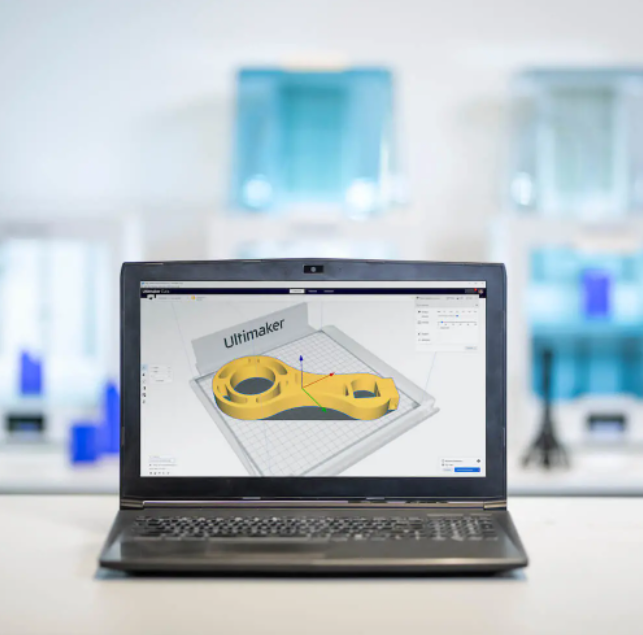When you think of 3D printing, the 3D printer and filaments are the first things that come to mind. However, more tools are working behind the scenes to make 3D printing projects successful.
One of these tools is slicers. Slicers convert your design/graphics file into a language that is readable by your 3D printer. If you don’t know which slicer to use, here is our ranking of the best slicing programs for 3D printing in 2022.
1. Cura: Overall Best Slicer for All Users

Pros: Free, easy to use, regularly updated, and has a large user community
Cons: Nothing but the professional version can run expensive
Pricing: Free; but upgrading to Ultimaker Cura Enterprise can cost up to $1000/month
OS: Windows, Linux, and Mac
Cura is a free open-source slicer, which is one of the reasons why it’s popular with the 3D printing community. Developed by Ultimaker with its users, the Cura isn’t only compatible with Ultimaker 3D printers, but also with competitor brands.
It is the perfect slicer for beginners to expert users as it is easy to use and also affords a high level of control. It is also frequently updated and allows third-party plug-ins from its huge user community for a better user experience.
The Cura accepts STL, OBJ, and 3MF files and repairs them if needed. Image files such as BMP, JPG, GIF, and PNG are also accepted. It also shows printing time, toolpath, and material estimates. If you want more customisation, you can also discover various settings in the experimental section.
2. ideaMaker: Best Slicer for Beginners

Pros: User-friendly, versatile, and highly intuitive
Cons: Less robust and smaller user community
Pricing: Free
OS: Windows, Linux, and Mac
For those beginning their 3D printing journeys, ideaMaker is another slicer that’s perfect for beginners up to advanced users. Even though it was developed by Raise 3D (another 3D printer manufacturer), it supports a wide range of 3D printer brands.
It offers an easy and clean slicing experience with its highly intuitive interface and fast and simple slicing process for STL, OBJ, and OBJ files. It offers automatic and manual support structure generation and model repair. It can also “slice” complex models and multiple files in a single print job.
Another highlight is the availability of different languages. ideaMaker can be used in English, Chinese, Korean, Japanese, and more.
3. Simplify3D: Best Slicer for Professional Users

Pros: Simple interface despite the complex settings and professional-level slicing
Cons: The expensive price
Pricing: $149 for a license for 2 computers
OS: Windows and Mac
With its hefty price tag, Simplify3D is best suited for professional users. It’s worth the price though as it provides an expansive and technical control over your 3D prints with its fast upload of STL, OBJ, and 3MF files and total control (rotate, scale, and repair) of 3D models.
You can also tweak various settings that other slicers can’t touch. You can edit layer control, infill methods, temperature, raw G-code, scripts, and extruders.
4. Netfabb Standard: Best Slicer for Metal 3D Printing

Pros: Best for industrial and additive manufacturing applications, allows STL analysis before printing, and printing simulation
Cons: Pricey
Pricing: $230/year
OS: Windows
Netfabb Standard is the best slicer for you if you want fool-proof 3D prints, which comes in handy with additive manufacturing and industrial projects in the aerospace, engineering, and automotive industries.
The Netfabb Standard allows you to thoroughly analyse your STL files before 3D printing to prevent issues from coming up. It also offers simulation tools that can predict how each component will turn out during and after printing. This is helpful when printing with metal filaments as they are notoriously difficult to print with. Netfabb identifies potential issues before starting printing.
For additive manufacturing applications, it allows lightweight lattice structures to reduce the weight of your print.
5. OctoPrint: Best Slicer/3D Printer Host for Remote Printing

Cons: Complicated for beginners
Pricing: Free
OS: Raspberry Pi, Windows, Linux, and Mac
While OctoPrint is not exactly a slicing program, its capabilities go beyond that. Originally a 3D printer host for remote printing, it allows remote monitoring and control of 3D printing projects. It is installed on a Raspberry device and can be enhanced with plugins and a webcam for remote viewing.
It also has an integrated slicing program powered by the CuraEngine. You only need to send the STL file and the printer will do the slicing for you.
Choose your slicer with our ranking of best slicer programs for 2022!
Set up your 3D printing projects for success with these slicer programs. Which slicer program is your favourite? Share yours below!

